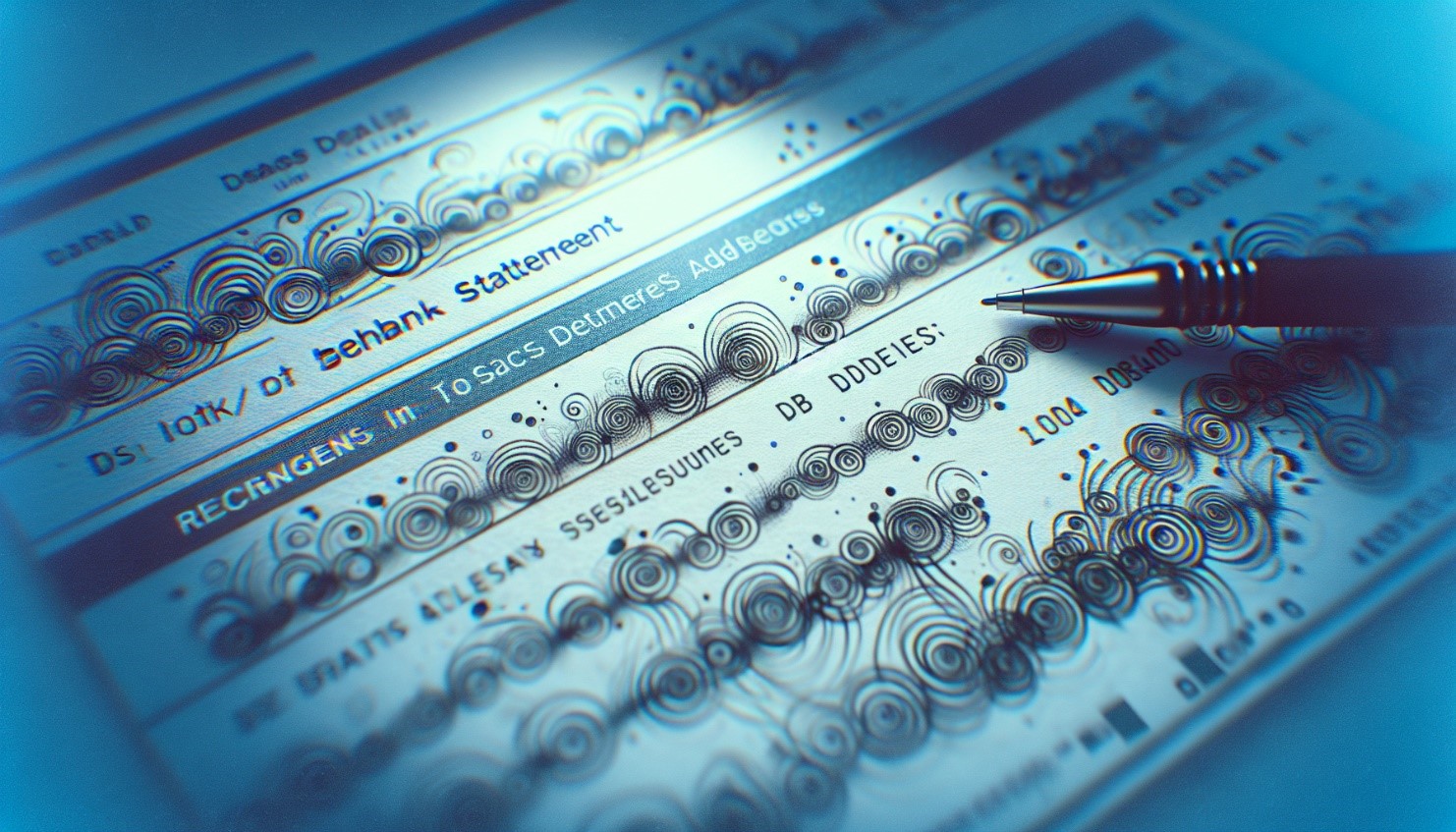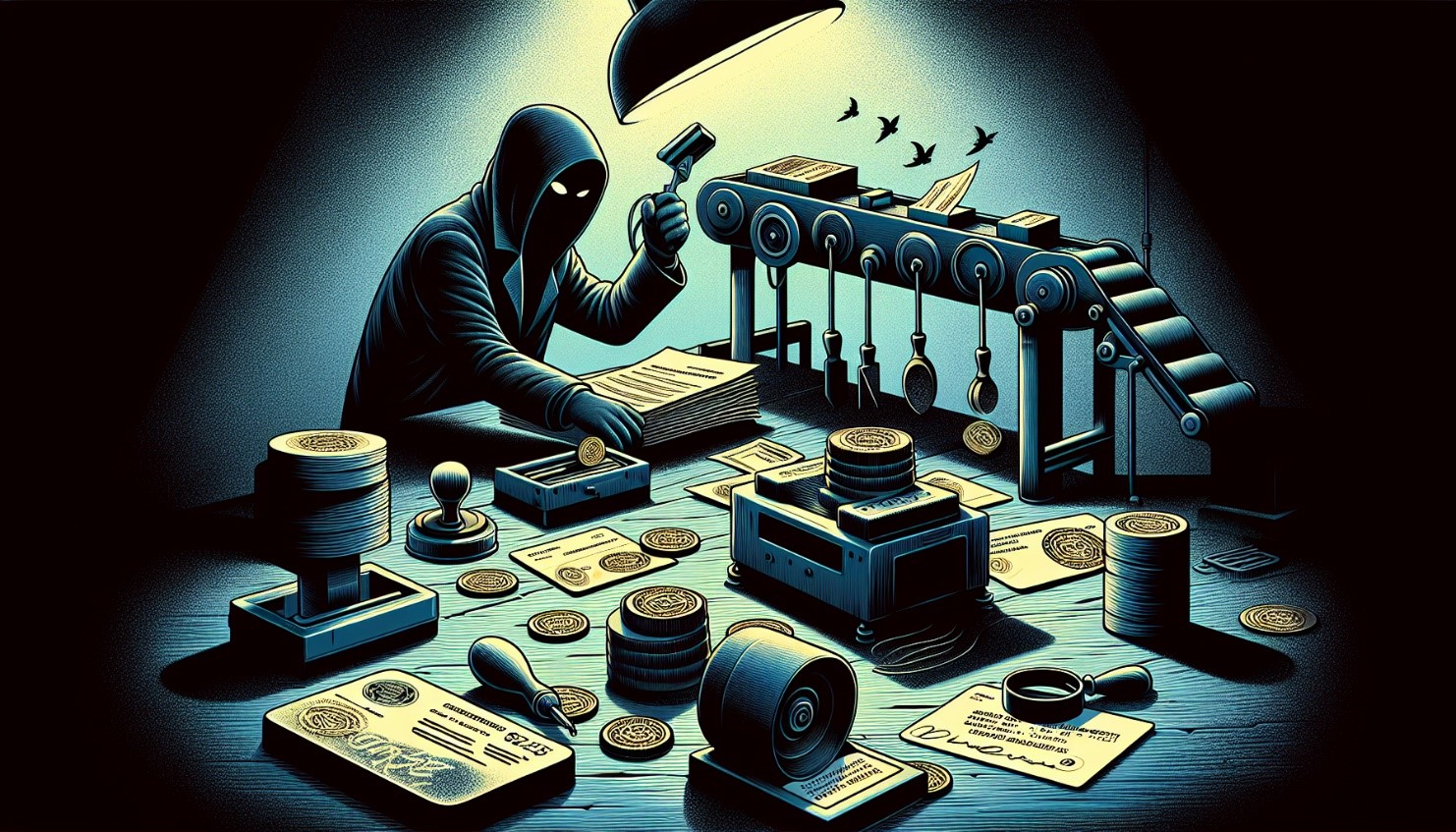Mastering Address Verification: How to Fake Proof of Address with Confidence
How to fake proof of address and why individuals may consider this route can be a complex subject mired in legal risks. Attempting such fraudulent activities comes with significant repercussions. In this article, we’ll unveil the technological methods behind such forgery, the documents typically involved, and the advanced systems in place to prevent and detect this type of fraud. Understand the gravity and sophistication involved in the world of address verification without advocating or instructing illegal actions.
Key Takeaways
- Proof of address is a critical security measure for accessing services and complying with regulations, relying on address documents like utility bills and bank statements for validation.
- Fake proof of address generators pose significant risks by creating convincing forgeries, potentially undermining verification processes and exposing vulnerabilities in various sectors.
- Advanced detection techniques using AI, ML, and photo scan verification are key in combating document forgery, enhancing fraud detection accuracy, and protecting against address verification fraud.
Understanding Proof of Address: A Key Security Measure
Have you ever paused to consider the significance of that piece of mail confirming your current address? It’s more than just an assurance that your utilities are up-to-date; it’s a security measure that speaks volumes. Proof of address is a document that validates one’s residence in a specific locale—a cornerstone for accessing services and meeting compliance mandates. Unlike proof of identity, which is verified through unique biometrics and databases, proof of address relies on address documents like utility bills or official correspondence.
While your driver’s license can confirm who you are, it doesn’t necessarily guarantee where you reside without additional support, as some jurisdictions demand more substantial evidence. Grasping the importance of address verification is not just about ticking boxes; it’s about ensuring secure engagements with services and adherence to essential compliance requirements.
Commonly Accepted Address Documents
When it comes to establishing your domicile, not just any document will do. The quest for a valid form of local address proof leads to a suite of commonly accepted address documents—each with its own story to tell. From the traditional utility bill to the official bank statement, these documents are the unsung heroes of address verification, ensuring that the concept of ‘current address’ remains more than just a fleeting idea.
But beware, the path of address verification is fraught with precise requirements and exceptions, such as the necessity of a lease agreement bearing a government stamp or the obligation of a driver’s license to be supplemented by another piece of evidence. It’s a journey through a paper trail that serves as a testament to one’s abode, where every contract letter and completed form plays a critical role.
Utility Bills for Address Verification

Envision opening your mailbox to find a recent bill—this isn’t just a reminder of your monthly expenditures but a potential key to proving your residence. Utility bills, encompassing services like gas, electricity, water, and mobile phone bills, stand as a popular choice for address proof. However, the ticking clock is a relentless gatekeeper; these bills must be recent, specifically dated within the last three months, to be considered current and relevant for verification purposes.
Financial institutions don’t take this lightly, often setting their own stipulations on which types of utility bills make the cut, turning the task of address verification into a careful selection process.
Bank Statements as Valid Proof

Amidst the array of address documents, bank statements emerge as a beacon of valid proof. Held in high regard, they narrate the financial tale of an individual, with the added benefit of serving as proof of address. The narrative they provide must be fresh, ideally portraying activity within the last three to four months to reflect a true account of one’s current residential address. Some may argue that transactions within the past year are sufficient, but most banks lean towards the more recent end of the spectrum.
Whether obtained through the convenience of online banking or the tangibility of a paper version by mail, bank statements serve as a cornerstone in the fortress of address verification for a bank account.
Other Common Address Documents
Beyond the realm of utility bills and bank statements lies a diverse landscape of other documents, each with its own merit as proof of address. Some examples include:
- Lease agreements, which often pass the test when they bear the mark of a government entity
- Insurance policies, whether for your car or your home, if they include your name and address
- Government tax letters, a symbol of civic duty
- Car registration documents, a testament to ownership
These are just a few examples of acceptable proof of address, including a change of address card.
Furthermore, banks may extend their grace to documents in a family member’s name, provided that the familial connection is proven, expanding the umbrella of verification to encompass a wider circle of address proofs. Credit card statements, property tax receipts, and even voter registration cards are all contenders in the quest to validate one’s residence.
The Dark Side: Fake Proof of Address Generators
Yet, lurking in the shadows is a sinister force capable of undermining the entire edifice of address verification—the fake proof of address generator. These digital charlatans craft documents so convincing that they blur the line between fact and forgery, posing a formidable challenge to those without the eye of an expert.
The implications are dire, as the presence of fake utility bills, in particular, exposes a vulnerability in the system, allowing deceit to seep through the cracks of verification processes and inflicting financial wounds on banks and institutions that are often difficult to quantify.
How Fake Address Document Generators Work

The machinations of fake address document generators are a blend of technological prowess and deceptive artistry. With the click of a button, they produce digital facsimiles of official documents, readily available in formats that are staples of our digital ecosystem—such as PNG, JPEG, or PDF. These counterfeits are dressed with all the trappings of authenticity, sporting the necessary stamps and logos that can fool the untrained observer. Employing tools like Faker, these generators concoct data that could easily pass for the real McCoy, crafting addresses that, though random, bear the hallmarks of legitimacy.
Such tools have their place in benign scenarios, such as testing applications, but when their output is used with malicious intent, they become instruments of fraud.
Risks Associated with Using Fake Address Documents
The risks of dabbling in the trade of fake address documents are not to be taken lightly. To employ a fictitious name or address for unlawful schemes is to dance with danger, as such actions are considered federal crimes, punishable by years in prison and staggering fines. The defense against such accusations is a steep hill to climb, requiring proof of either an absence of fraudulent intent or an honest mistake—an uphill battle that is fought in the stern arena of courtrooms.
The very existence of laws targeting fake address documents is a testament to the critical importance of maintaining the sanctity of the mailing system and the public’s trust in it. The repercussions of using fake documents extend beyond legal consequences; they can also compromise the security protocols and compliance measures across industries, from banking to government services, leaving a trail of vulnerability in their wake.
Advanced Detection Techniques: Combating Fake Proof of Address
In the ever-evolving battle against the dark arts of document forgery, advanced detection techniques stand as our vanguard. AI-powered identity verification systems are the new sentinels, employing algorithms that cross-reference personal details with trusted sources to ensure that address verification is not just a process but a bastion of accuracy. These intelligent systems are tireless in their quest to identify the subtlest of patterns and red flags that betray the presence of fraud, scrutinizing documents for inconsistencies and anomalies that are often the telltale signs of forgery.
AI-Powered and ML-Based Solutions

The advent of AI and ML-based solutions marks a new era in the detection of fraudulent address documents. These powerful tools delve into the details, identifying discrepancies that might escape the human eye, such as font inconsistencies or anomalies in company logos. Their capacity to unearth invisible fraud indicators transforms the landscape of verification, revealing the smallest alterations in identity or financial information that could indicate foul play.
The implementation of such systems is not just about safeguarding against fraud; it’s a strategic investment that pays dividends, yielding a substantial return on investment by reducing credit losses and enhancing the accuracy of fraud detection.
Photo Scan Verification
Photo scan verification is a shining example of technology’s prowess in authenticating address documents. This sophisticated process involves:
- Scanning a utility bill or an official document
- Comparing it against a database of known samples to establish validity
- Detecting any irregularities that might suggest tampering or forgery
The technology’s precision allows it to ensure the authenticity of address documents.
By offering an additional layer of scrutiny, photo scan verification serves as a critical tool in the arsenal against the misrepresentation of one’s place of residence.
Tips for Preventing Fraudulent Address Verification
In the vigilant fight against fraudulent address verification, knowledge is power, and action is the shield. Collecting and verifying a current address goes beyond deterring deceit; it fulfills a regulatory imperative under guidelines such as KYC and AML. The specter of fake proof of address documents threatens to erode the very foundations of the verification process, exposing entities to the perils of inaccurate residency information.
To fortify defenses, one must be proactive, employing multiple documents to provide proof and embracing thorough vetting processes.
Be Vigilant in Reviewing Documents
Remaining vigilant in document review is not merely a suggestion but a necessary practice to counter the threat of address fraud. Monitoring mail for change-of-address confirmations from the USPS or notifications of new accounts can serve as early warning signs of potential fraudulent activity. Even a subtle reduction in mail volume could signal unauthorized changes, prompting immediate verification with the postal service at your local post office.
It’s a critical, ongoing surveillance effort that could mean the difference between security and compromise.
Use Trusted Sources for Address Documents
Trusted sources are the bedrock of valid address documentation. Banks, government agencies, and judicial authorities are the pillars of trustworthiness, issuing documents that are the gold standard in the world of address verification. A government agency, along with other entities, often requires that these documents reflect the individual’s living situation within the past three months, ensuring their freshness and accuracy.
A document’s legitimacy is further affirmed when it corresponds with other government-issued identification, ensuring that the proof of address is not only acceptable but also accurate.
Implement Advanced Detection Tools
The cutting edge of fraud prevention lies with the deployment of advanced detection tools. Some of these tools include:
- AI and ML technologies, which elevate the accuracy of identity verification and streamline the process by automatically populating form fields and reducing human error
- Document fraud detection solutions, which enhance efficiency by slashing time spent on manual reviews and enable near-instant customer approvals
- These tools not only boost customer win rates but also deter fraudsters in their tracks.
Complementing these tools are identity theft protection services, which monitor personal and financial accounts for suspicious activity, offering proactive alerts that empower individuals to act swiftly against fraudulent attempts.
Summary
As we draw the curtains on our exploration of address verification and its myriad complexities, we are reminded of the gravity and necessity of this process. From the quintessential utility bill to the formidable AI detection system, each component plays a pivotal role in ensuring the integrity of our personal data and financial transactions. The journey through the labyrinth of address verification is a testament to the vigilance required to safeguard our identities and the ingenuity of technological advancements that protect against fraudulent activities. Let this be a clarion call to remain informed, proactive, and resolute in the face of deceit, for in the realm of proof of address, authenticity is the beacon that guides us to safety and trust.
Frequently Asked Questions
What mail can be used as proof of address?
You can use utility bills, credit card statements, bank statements, or letters from businesses or government agencies as proof of address. Make sure the document has your name and address on it, and if necessary, include multiple documents such as a utility bill and a business mailing.
Can I get proof of address online?
Yes, you can get proof of address online by accessing official documents through online banking or printing billing statements from your online accounts, such as utility bills or credit card statements. This can serve as proof of residency.
Can I use a driver’s license as proof of address?
In most cases, a driver’s license may not suffice as proof of address. Additional documents may be required to fulfill the address proof requirement, so it’s essential to check the specific requirements in your local area.
What are the risks of using a fake proof of address document?
Using a fake proof of address document can have serious legal consequences, including federal crimes punishable by up to five years in prison, fines up to $250,000, or both. It can also compromise security and compliance protocols across various sectors and undermine the integrity of the mailing system.
How can advanced detection techniques help in combating fake proof of address?
Advanced detection techniques, like AI-powered and ML-based solutions, can combat fake proof of address by cross-referencing personal details with trusted sources, detecting discrepancies, and revealing fraud indicators, ultimately improving verification accuracy and reducing fraud.
